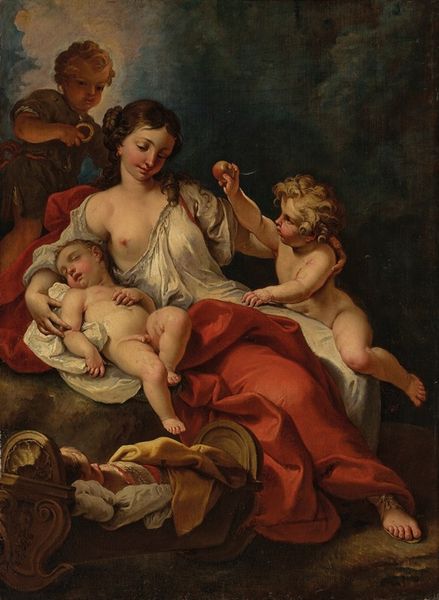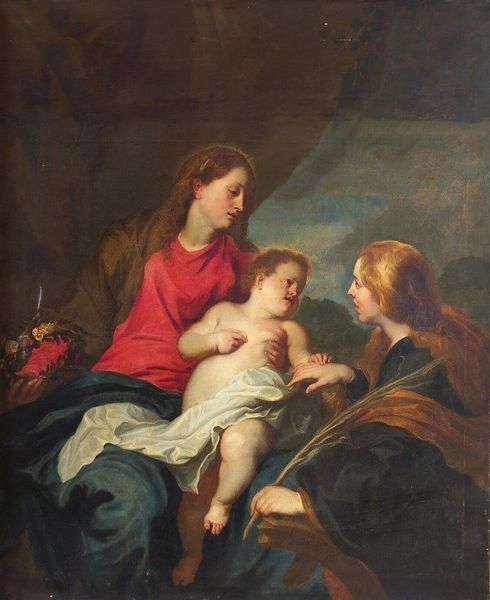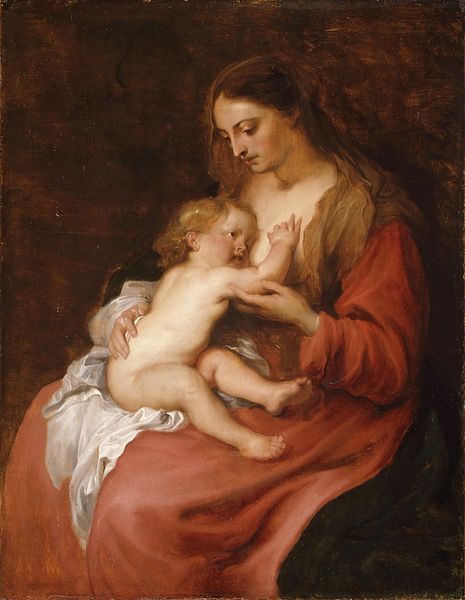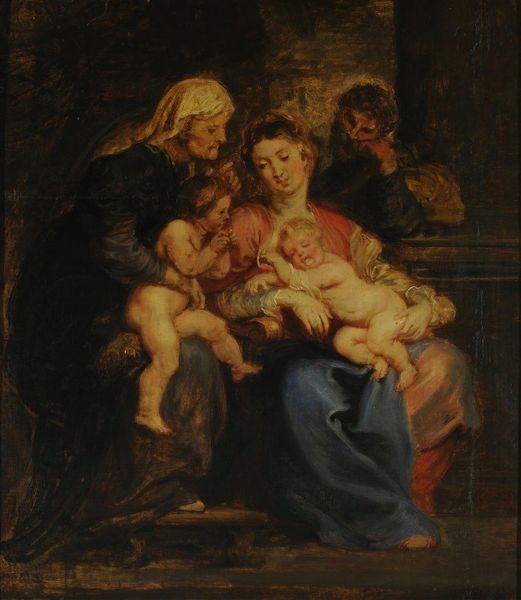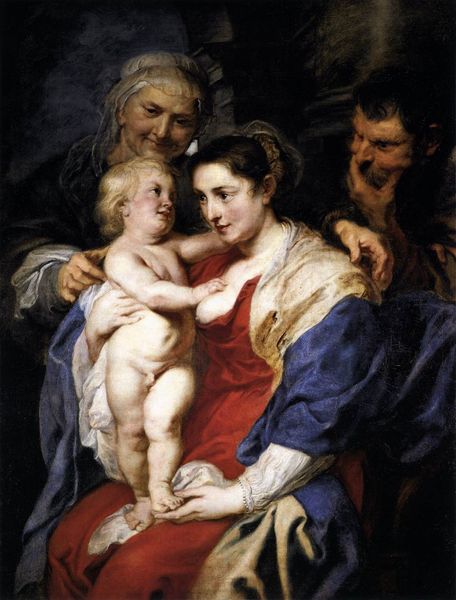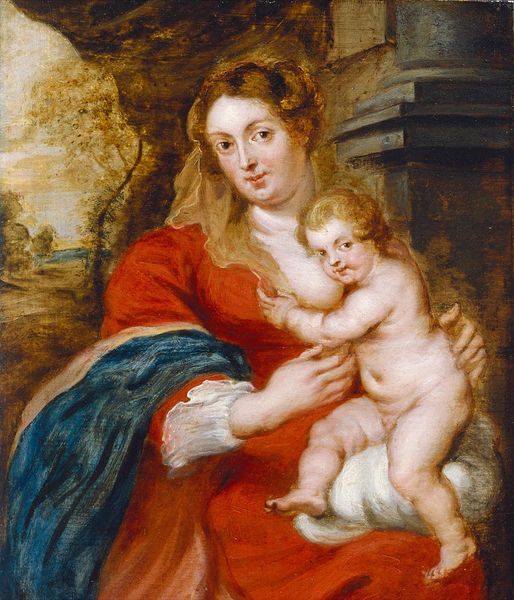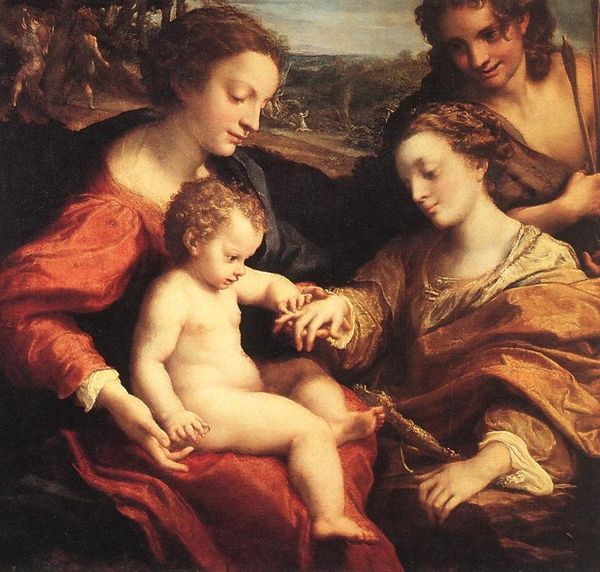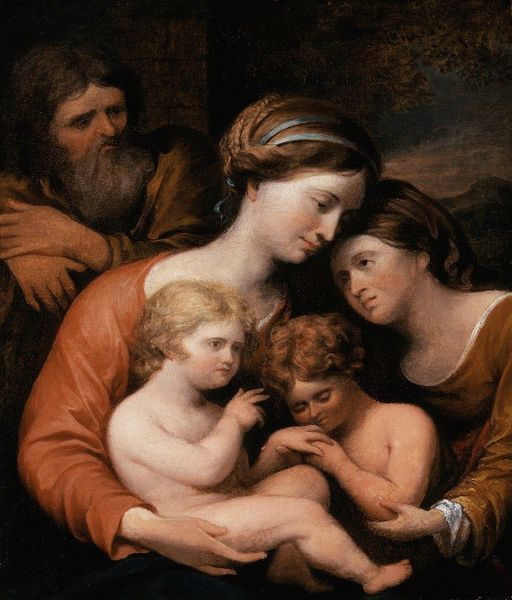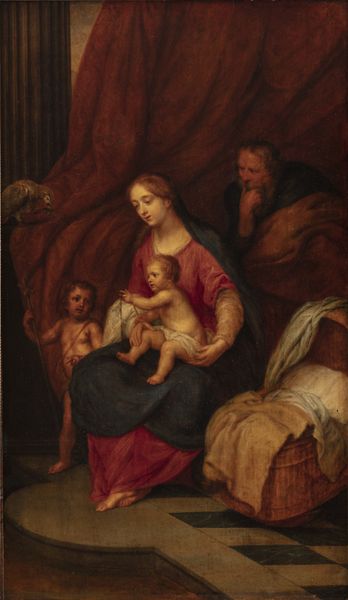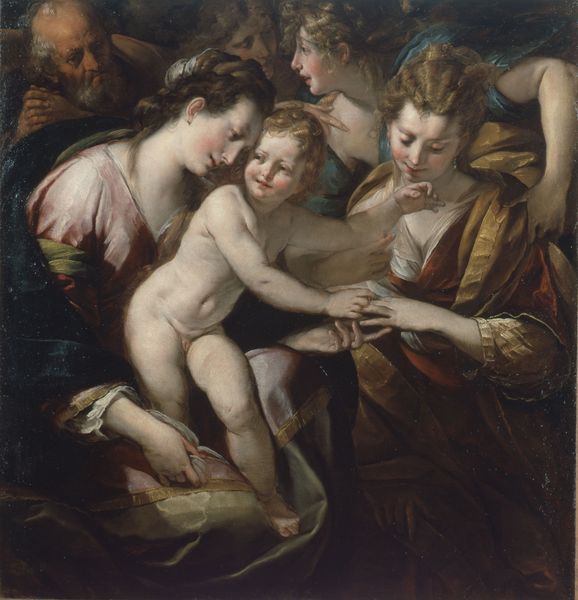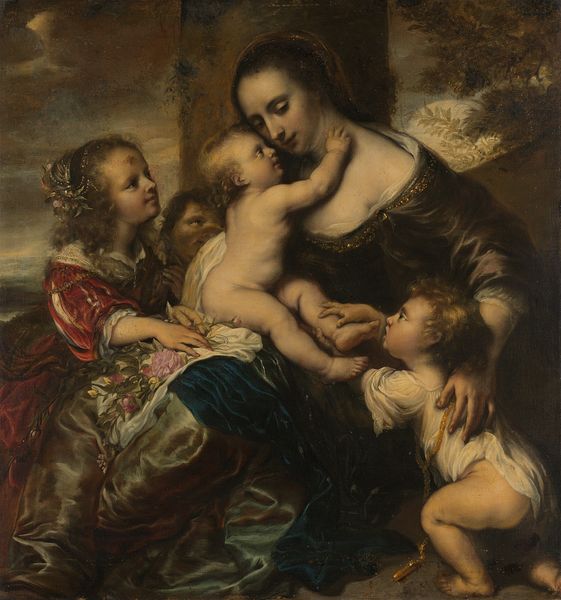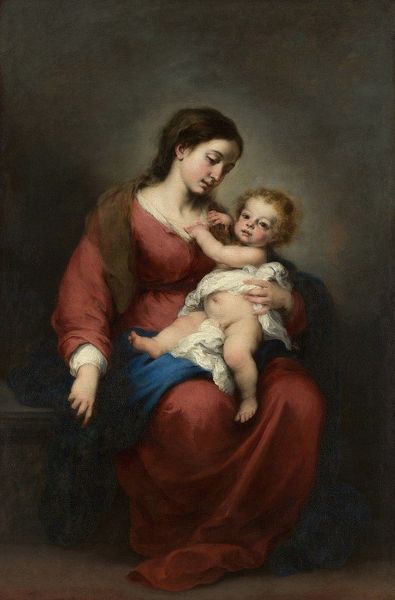
oil-paint
#
portrait
#
baroque
#
oil-paint
#
figuration
#
oil painting
#
history-painting
#
italian-renaissance
Copyright: Public Domain: Artvee
Curator: Standing before us is "The Virgin and Child with Sts. Elizabeth and John the Baptist" painted by Peter Paul Rubens between 1632 and 1634. Editor: It’s remarkable, isn’t it? Immediately striking—the warmth, the light…the sheer vitality of the figures is undeniable. The fabric drapes so luxuriously. Curator: Indeed. The composition invites us into a familiar scene from Christian iconography: the meeting of the infant Jesus and John the Baptist, emphasizing familial connection through the figures of Mary and Elizabeth. Rubens is, of course, rendering a pivotal moment, foreshadowing John's later recognition of Christ. The lamb that little John embraces becomes a symbol of Christ’s own sacrifice. Editor: The use of color really emphasizes that. Look at how the crimson robe of the Virgin draws the eye, a visual anchor amidst the lighter tones of flesh and fabric. The textures created with oil paint--particularly in the drapery--create that real sense of Baroque drama. Curator: Rubens frequently employed color to accentuate emotion and draw the viewer’s eye to important narrative elements. Red in religious art, often signifying both love and sacrifice, reinforces the divine nature of the scene and prepares the viewer for the weightier implications. Notice too how Rubens positions Mary, not just as a mother, but also as a symbolic protector of Jesus as he suckles at her breast. This intimate gesture links directly to ideas of divine nourishment and nurture. Editor: Absolutely. The column in the back creates an interesting framing device. The solidity of the architectural elements contrasted with the fluidity of the figures keeps the viewer grounded while inviting them into the mystical scene. The strong diagonal lines and tenebrism creates that beautiful tension that pulls us in. Curator: And consider the overall cultural resonance: this tender domestic moment gains universal relevance. It affirms fundamental human bonds against a backdrop of significant religious meaning. Editor: Ultimately, it’s Rubens’ mastery of the oil paint and keen sense of the visual elements that creates this lasting impact and invites interpretations on many different levels.
Comments
No comments
Be the first to comment and join the conversation on the ultimate creative platform.
